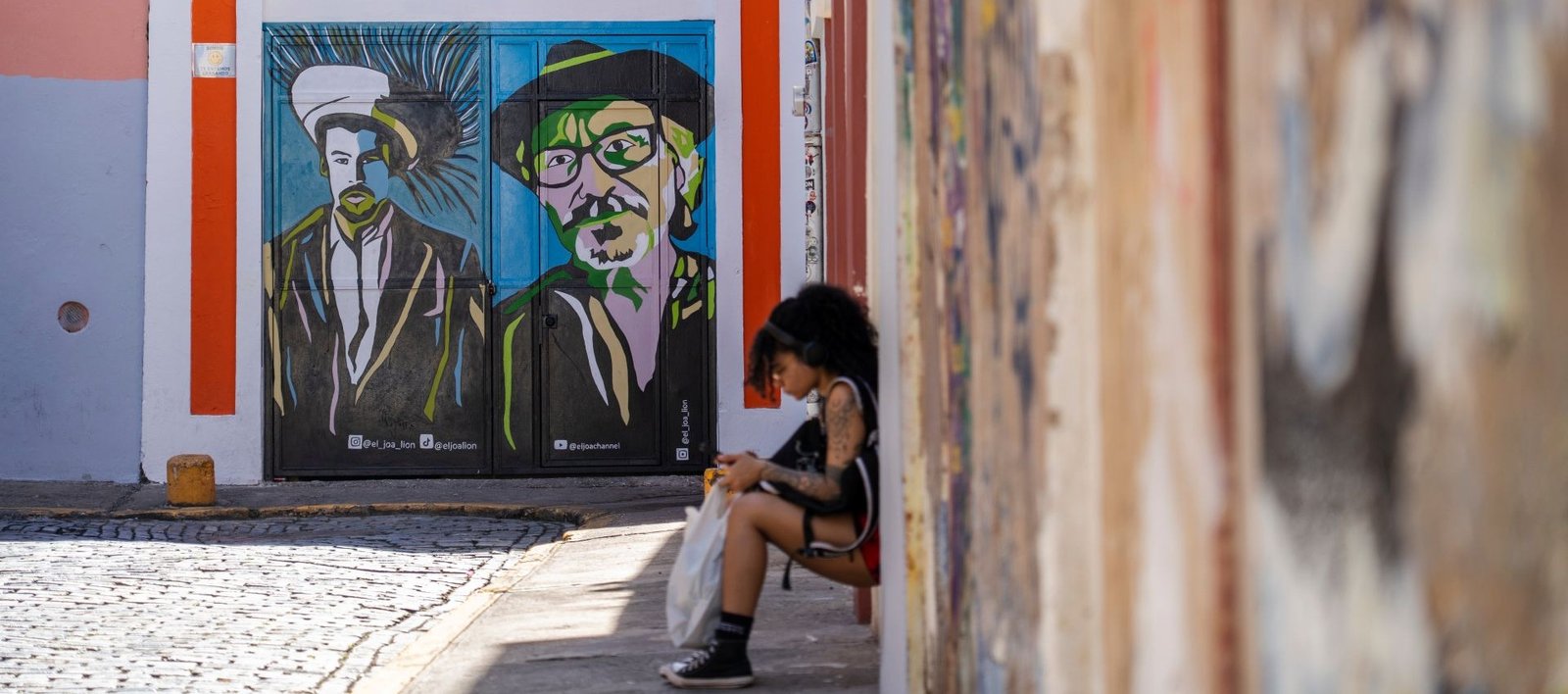
Puerto Rico, Looking for Benito’s Island
The album by Bad Bunny (aka Benito), Debi tirar más fotos ( Should Have Taken More Photos), inspired us to visit the Island of Enchantment and explore its community tourism to discover the authentic Puerto Rico embraced and promoted by the artist. We met leaders who have created initiatives that support the communities where they operate, while at the same time showing their love for their country from the roots on up.
By Alexa Carolina Chacón
Photos: Tito Herrera
This article was conceived in January 2025 with the launch of Debi tirar más fotos ( Should Have Taken More Photos)Bad Bunny’s most recent album. To accompany the album, which reached one billion plays on streaming platforms in streams just thirteen days, the Puerto Rican artist also released a documentary written and directed in collaboration with filmmaker Arí Maniel Cruz and starring actor Jacobo Morales, both fellow Puerto Ricans. In the 12:58 minute video, Bad Bunny sketches a forceful critique of society and cultural identity, presenting an image of a dystopian Puerto Rico without Puerto Ricans, the inhabitants having been displaced by privileged North Americans, with streets and businesses dominated by the English language and a foreign culture that has overwhelmed the local way of life, The phrase “we’re still here,” which is said to the character played by Morales (a narrator who paints a nostalgic vision of Puerto Rico in the documentary), ends the video on a hopeful note, and rejects the idea that true Puerto Ricans no longer exist.
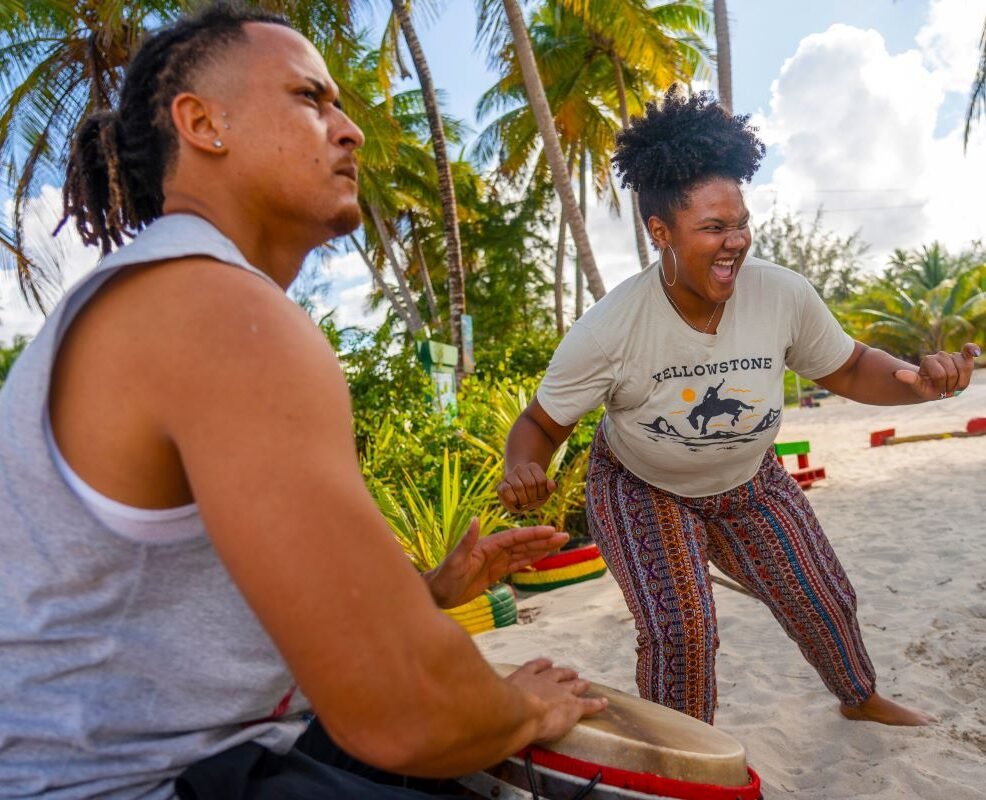
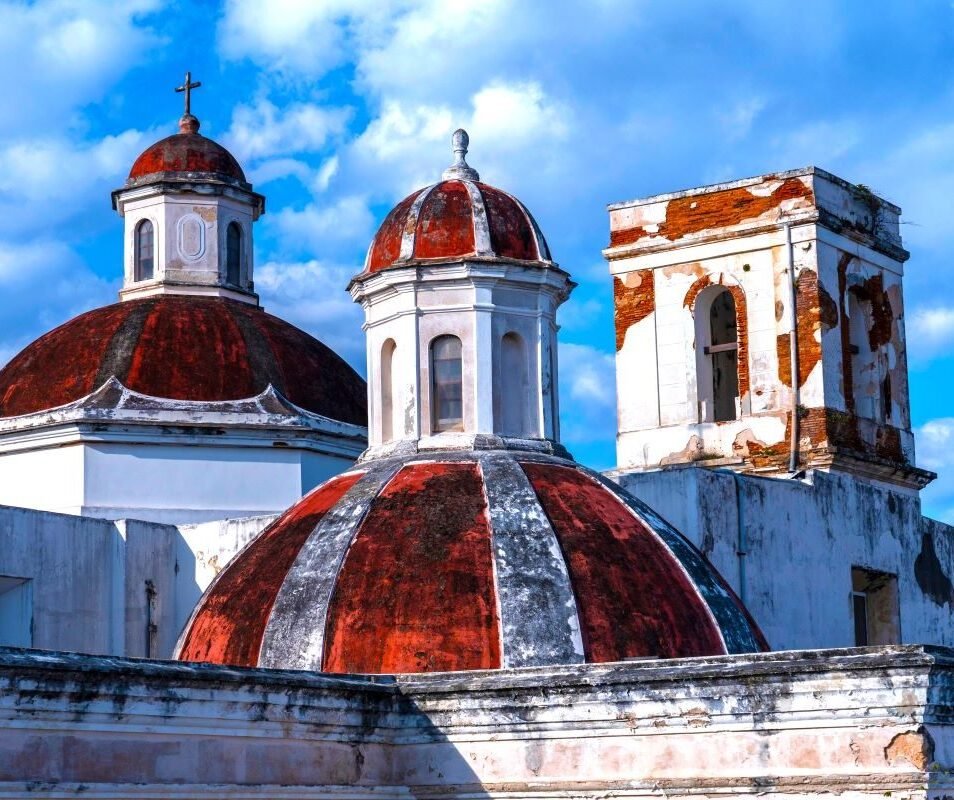
Santurce’s La Placita comes alive at dusk with music, fried foods, and the flavor of the Caribbean night. Start your tour at La Alcapurria Quemá, a local inn where you’ll experience the true Puerto Rican flavor with high-quality cocktails. Then, get ready to dance to tropical rhythms at La Placita, where the party takes place right in the street.
Benito (better known as Bad Bunny) laid the groundwork for a vital discussion about what version of Puerto Rico is authentic and how we can discover it. My mission was clear: I had to travel to the island to explore community tourism that goes back to the island’s roots. Fate gave me a sign that I was on the right track when, at the Panama International Film Festival (IFF), I met the documentary’s codirector Ari Maniel Cruz, who had entered his feature film, Sana y salva.
“Benito criticizes from a place of unity, not of division, which is where we go wrong, Debí tirar más fotos is a call to action in the present. Many things worry him, and he is exploring them. Like us, he is discovering the scope of his work. The Puerto Rico of Benito’s dreams exists, it’s there,” noted Cruz in a wide-ranging interview that deserves its own article.
Your mission, dear reader, if you are traveling to San Juan to watch the artist perform during his residency at the Coliseum of Puerto Rico beginning this month, is to engage in responsible tourism on the island and support what Benito represents beyond his music; people who truly love their country, culture, and traditions.
El Yunque and Loíza: Back to the Origins
If we’re going to talk about authenticity, let’s begin with what was here before all of us: nature. In Puerto Rico, El Yunque takes us back.
Located less than an hour from San Juan, Bl Yunque Forest, extending ver some forty-four square miles of mountains, rivers, waterfalls, and unique biodiversity, is one of the most important ecosystems in the Caribbean. This is the home of the golden coquí, an endemic species of frog found nowhere else in the world, which takes its name from its call of ” co-quí” This animal has become a resounding symbol of Puerto Rican identity. El Yunque features trails of all types, suitable for everyone from the most adventurous to families.
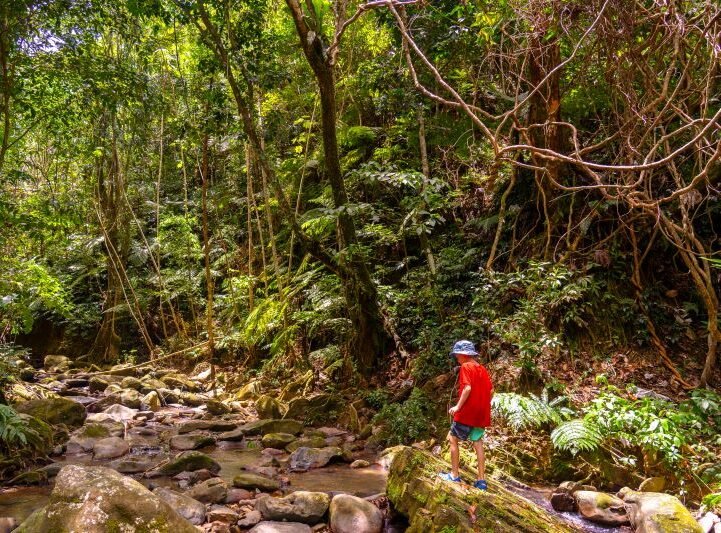
Rent a car from San Juan and in just a few hours you can be on the southern beaches, the El Yunque Rainforest, or inland towns.
From there we continued toward Puente Herrera in Loiza, the epicenter of African heritage in Puerto Rico. Heavily influenced by the Yoruba tribe, the life of this community revolves around drums and the sea. This place brings out my most Caribbean side in a workshop on bomba puertorriquera (one of the oldest music and dance genres in Puerto Rico) led by Alondra Ortiz and Jean C. Osorio, from the cultural group Afriktaal. The pair are members of folklorist Sheila Osorio’s Bomba N’Zambi Workshop. The drum sounds and Alondra moves gracefully on the sand, her irrepressible personality acting out the seduction. Then it’s my turn. I don’t hold a candle to her, but it doesn’t matter. Here, you come to connect with the island’s heritage.
Norymar believes that every traveler needs to visit Ponce because “Puerto Rico is more than San Juan. Its people, resistance, culture, and tradition speak of the Caribbean. That warmth envelops you and fills you with love, leaving you charmed by everything that identifies us.” It is important to visit Ponce to experience a less touristic version of the Puerto Rican soul.
Ponce: The Most Puerto Rican city
It is said that you need to go south if you want to understand the essence of Puerto Rico. There you’ll find Ponce, the pearl of the South, cradle of artists and revolutionaries. Noymar Maldonado from Iala Caribe Tours, joined us in visiting the historic district under a blazing sun as we absorbed a narration imparted with the verve of a children’s story. The c ity of Héctor Lavoe speaks of pride and resistance.
We began the tour at the Utopia” Souvenir Shop and Café, heading to Plaza Las Delicina and the iconic Wiechers-Villaronga House, etter known as the “cake house” for its resemblance to a wedding cake. We then continued to the Carmen Solá de Pereira Cultural Center, El Vigia Hill, La Cruceta (Cross Watchtower), and the imposing Serralles Castle, ending with a traditional lunch at Restaurante Nispero.
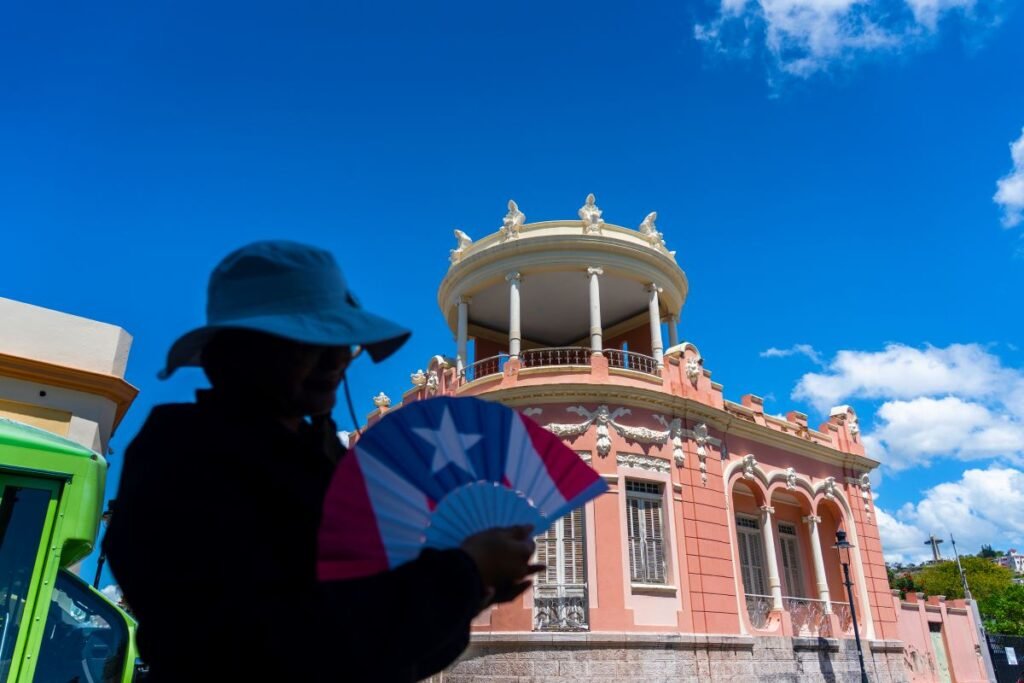
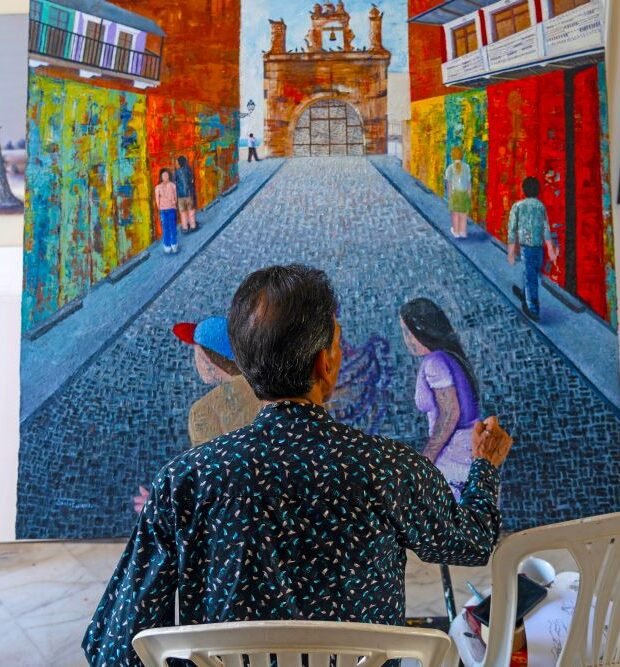
Norymar believes that every traveler needs to visit Ponce because “Puerto Rico is more than San Juan. Its people, resistance, culture, and tradition speak of the Caribbean. That warmth envelops you and fills you with love, leaving you charmed by everything that identifies us.” It is important to visit Ponce to experience a less touristic version of the Puerto Rican soul.
Flavors with History: From Farm to Rum
We begin tasting Puerto Rico at Frutos del Guacaboa family-run agrotourism estate located in Manati that functions as a laboratory in sustainability. There, among microgreens, edible flowers, and rabbits and goats that seem to pose for photos, we learn that agriculture can also be an undertaking of culture and tourism. They welcomed us with a tasting of flavors grown just feet from where we stood. There was fresh goat’s cheese, various kinds of fruit vinaigrettes, and a lunch that tasted of the living earth. The Frutos del Guacabo enterprise not only grows produce but also serves as a distribution hub for local farmers, helping them introduce sustainable practices on their own farms.
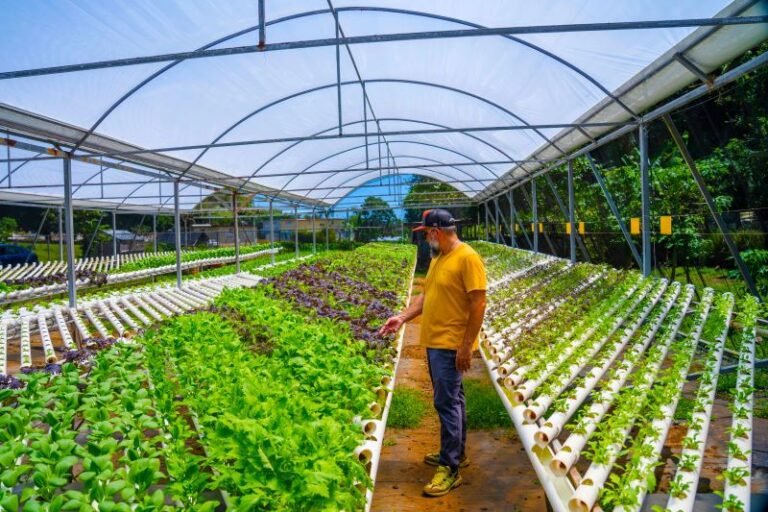
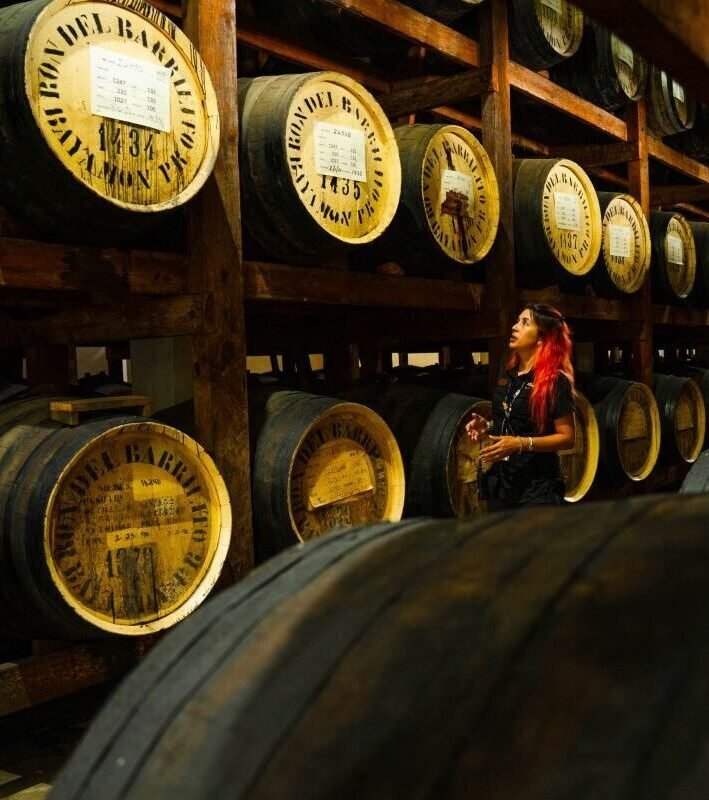
The next stop was Ron del Barrilito, in Bayamón.
On an estate blessed with hundred-year-old barrels, we learned mixology in an entertaining class that demonstrated the versatility of this spirit distilled on the island. The experience was a master class on Puerto Rican identity in a bottle.
We wrap up the day with dinner at Verde Mesa, in Old San Juan. We are welcomed by its owner and founder, Loyda Rosa, whose mere presence distills the essence of the Puerto Rican woman: tenacious, visionary, and committed. Along with her team, she has turned this restaurant into a temple of local flavors and an essential stop on every visit to San Juan.
Chinchorreo (Puerto Rican bar hopping) is an island tradition that has to be experienced. It consists of popping into a string of intormal cales and bars, munching tried treats, downing drinks, and dancing. Piñones, Guavate, and la Ruta del Lechón are compulsory stops.
Old San Juan Is home to several not-to-be-missed bars and restaurants. Verde Mesa offers farm-to-table food in an art-filled atmosphere. La Factoria is the place to try wonderful cocktails and cut loose to salsa on the dance foor. La Taberna Lúpulo offers more than fifty beers on tap.
San Juan: The Living Jewel of the Caribbean
We toured Old San Juan with Juan Montalvo from Patria Tours. The name Patria-meaning homeland— was inspired by Panamanian singer-songwriter Rubén Blades’s famous song. We made our way through all the usual highlights, but we also penetrated deep into the heart of places that only a passionate local like Juan could show us: the Ballajá Barracks, the Minor Basilica of St. John the Baptist, and the Department of State of Puerto Rico, among others.
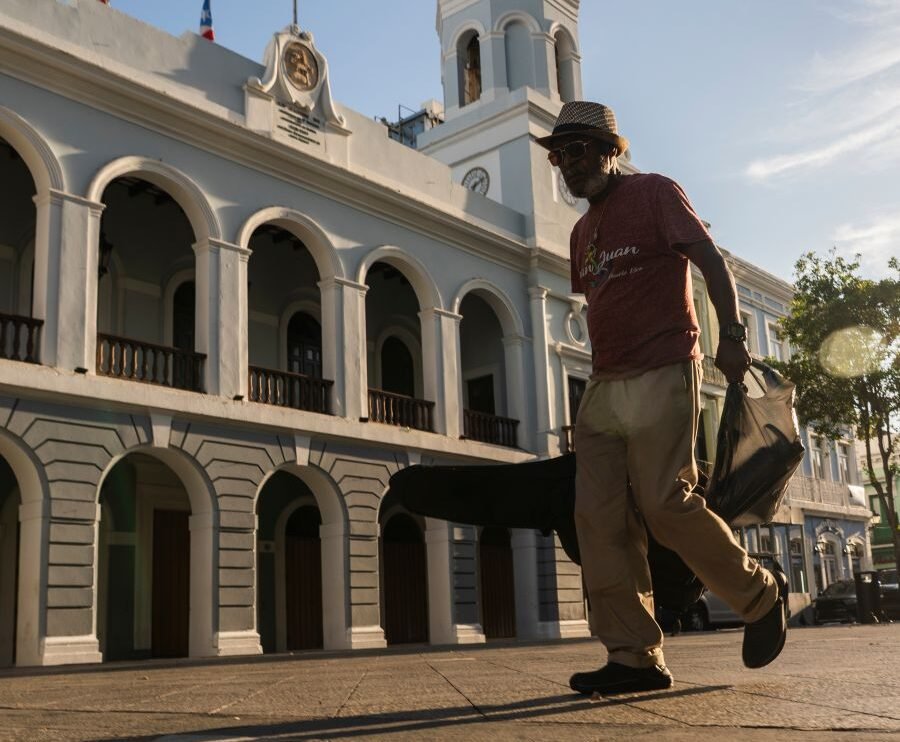

But San Juan is more than history written in stone; it is also a living thing, as proven by La Placita de Santurce, a place much better visited at night. Go prepared to savor the authentic taste of Puerto Rico at La Alcapurria Quemá, a casual eatery that has been operating for more than twenty years. We are wel comed by owner Irvin Cofresi, whose parents founded the restaurant. He is one of the siblings now running the business. Unlike other restaurants with award-winning chefs, this is Puerto Rican food in the style of neighborhood grandmothers.
You mustn’t skip the alcapurria, a kind of long fritter, crunchy on the outside and soft inside, made with a dough of green plantains and grated yucca filled with spiced meat. Round out the order with shrimp turn-overs, the most tender fried meat I have ever eaten, and a classic mofongo (fried green plantains mashed with pork cracklings and garlic). My preferred tipple to wash it all down ts the island’s favorite cocktail: the Bayamón Mule. No need to speak, just enjoy,
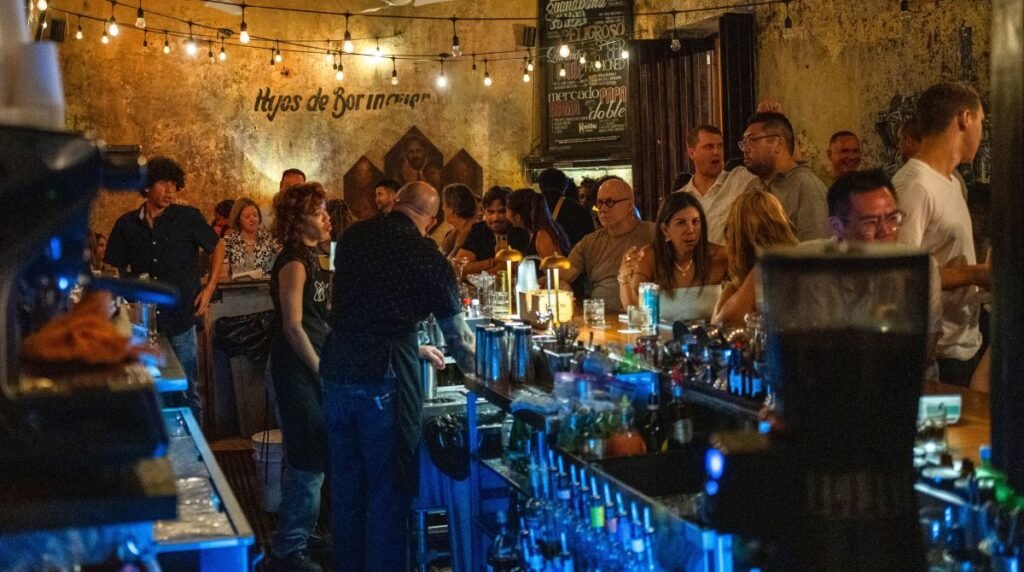
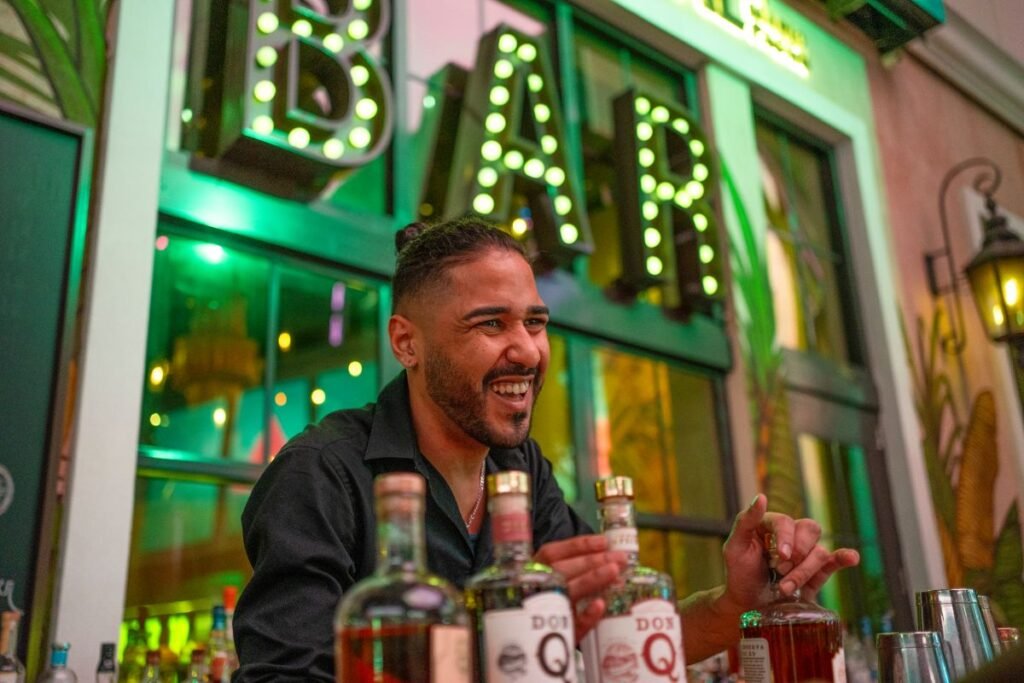
See Puerto Rico withPanorama de las Américas
A selection of must-see places to experience the islandas we did. For further information visit the web page discoverpuertorico.com.
Nature and Ancestral Culture
El Yunque National Forest: discoverpuertorico.com
Loíza y Piñones: discoverpuertorico.com
Frutos del Guacabo: @guacabo674
Ron del Barrilito: www.rondelbarrilito.com
History and Heritage
Viejo San Juan: @patriatourspr
Ponce: www.islacaribetours.com, @islacaribetours
Rastaurants and Local Cuisine
La Central by Mario Pagán: @lacentralbymariopagan
La Alcapurria Quemá: @alcapurriaquema
Verde Mesa: @verdemesa
Chinchorros en Piñones y Guavate: www.discoverpuertorico.com
Nightlife and Entertainment
La Placita de Santurce: www.discoverpuertorico.com
La Factoría: @lafactoriapr
La Taberna del Lúpulo: www.latabernadellupulo.com
Accommodation
Hotel Palacio Provincial: www.palacioprovincial.com, @palacioprovincialsj
Private Transportation
Bespoke: @bespokepuertorico
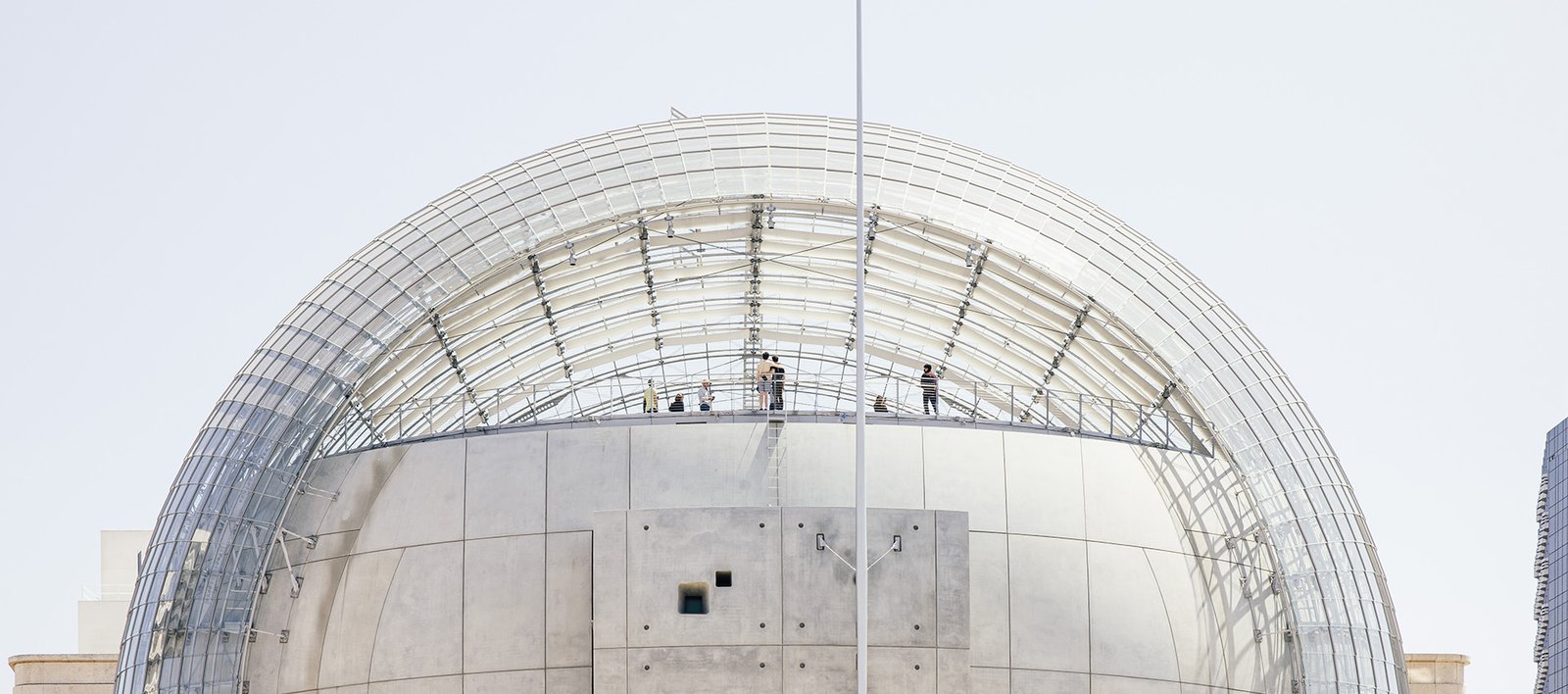
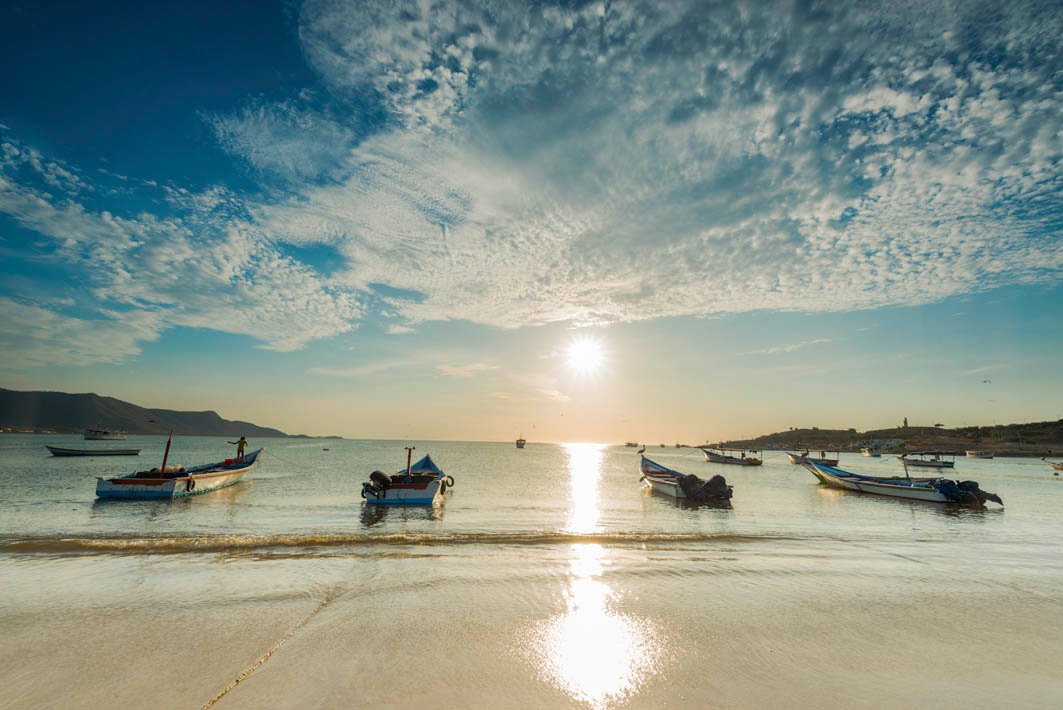

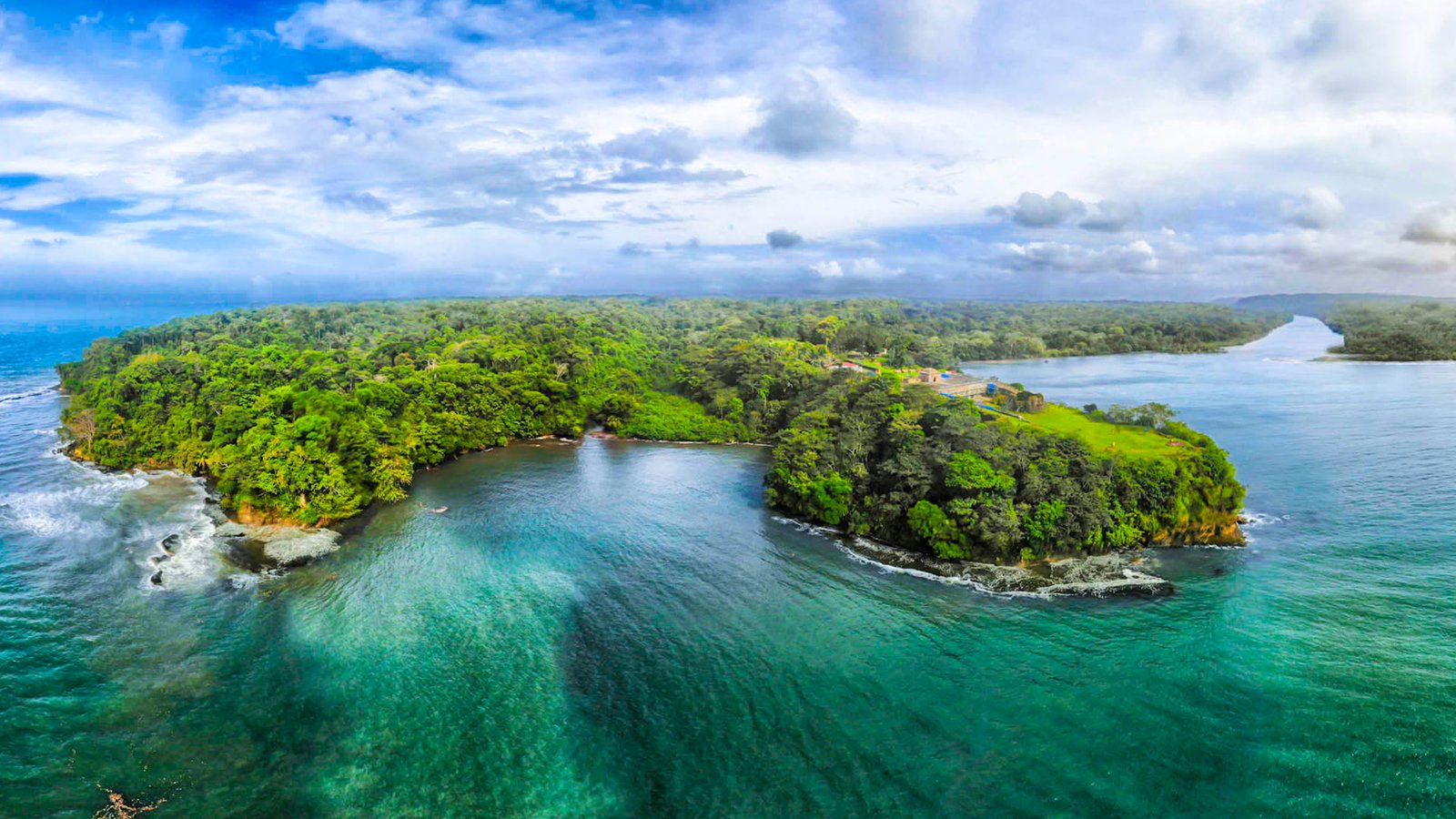
Leave a Reply